All about stools: features and varieties, choice and combination in the interior

Stools are a common piece of furniture found in almost every apartment or house. Let's talk about the main points related to their types, purpose and selection rules.
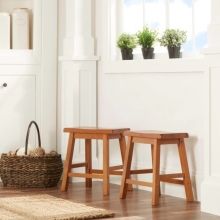
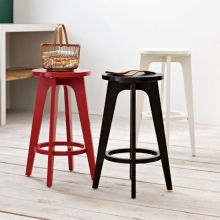

What is a stool?
A stool is a piece of furniture designed so that one person can sit on it. A stool differs from a chair in that it has no back. Accordingly, stools do not have armrests typical for armchairs either. Low stools with a padded seat, which is often round in shape, are called ottomans. Poufs should not be confused with benches, although both of them belong to upholstered furniture. The bench often does not have a back either, however, this piece of furniture is considered a kind of bench.
Stools are a real find in the event that the room has a small area and it is not possible to place the required number of chairs in it. Thanks to the absence of a backrest, the stools easily fit under the table, which allows you to free up space if necessary. In addition, foldable models can be stored in the utility room. Such spare stools can be very helpful in case of the arrival of guests. A stool is a functional piece that looks appropriate in any room, provided that it is chosen according to its style.
Advantages and disadvantages
The main advantage of this type of furniture is its compactness and low weight. For this reason stools are used in small rooms, as well as in open spaces in different situations (for example, fishing or weeding a vegetable garden). The main disadvantage of stools is the lack of backs to lean back on. All other advantages and disadvantages depend on the specific stool model and the materials from which it is made.
Appointment
By appointment all types of stools can be divided into several types:
for home;
outdoor (garden, summer cottage, for tourists);
for a bath;
bar;
orthopedic;
children;
professional, for example, for musicians (for playing the piano, drums), for manicurists, for doctors, etc.

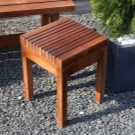

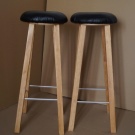
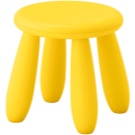
Home stools are available in many varieties. It:
kitchen;
pouf;
to the bathroom / shower room;
for the toilet (to the restroom);
for the hallway;
a stool in the form of a side table or bedside table;
ladder stool;
step stool.
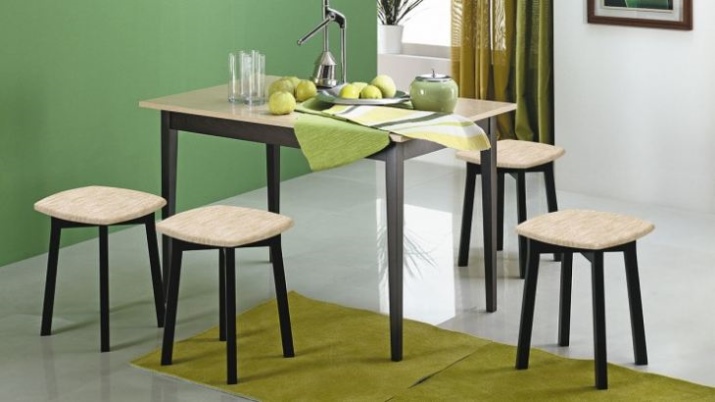
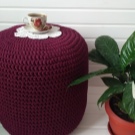
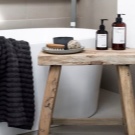
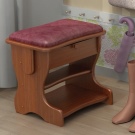
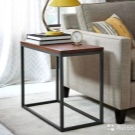
Poufs and stools can be used in different rooms:
in the bedroom;
in the living room;
in the corridor;
in the children's room.
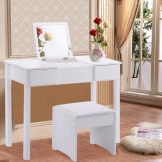
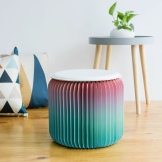
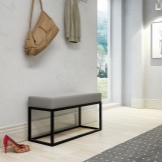
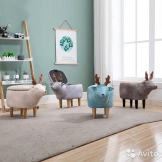
Poufs are on small legs, on casters, or without one or the other.
Such furniture is placed in front of the bed, near the dressing table, near the chair or sofa as a footrest. Poufs are considered a good option for a child's room. As a rule, in this case, models with a round seat, without corners, are selected. This piece of furniture can also serve as a toy box at the same time.
Ottomans for children's bedrooms are often made in the form of various animals, which makes these stools a noticeable interior detail, more like a large toy than furniture. Sitting on an ottoman, it is convenient to put on and take off your shoes, so they can often be seen in hallways. In this case Poufs often combine the functions of a stool and a storage box.

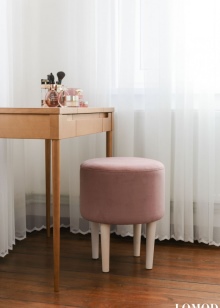

In the hallway, not only poufs can be used, but also other types of stools, for example:
with a shelf for shoes;
with umbrella stand;
with a pull-out drawer for small items.
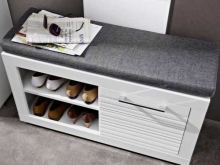
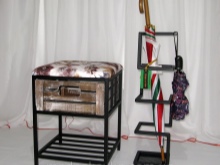

Stools are also used in bathrooms. There are several types of bathroom stools.
For the elderly, those with trauma, after surgery, etc., so that they can shower while sitting. Shower stools (for a shower cabin) are made of moisture-resistant materials, have anti-slip supports, holes in the seat, some models are made with handles, with adjustable legs.
Step stool. Standing on it, small children can wash their hands and brush their teeth over the sink. For adults, such a step will also be useful: with its help it is easier to reach the upper shelves in the cabinets, as well as to enter the shower stall if the pallet has high sides. These stools have a low height and anti-slip coating on the supports and on top.
With shelf for storing towels... They are also made of moisture resistant materials. Indispensable for small rooms in which it is impossible to install a rack or chest of drawers.
For toilet - this is also a step stool, but with a cutout on top, which allows you to place the product close to the bottom of the toilet bowl or to the pedestal (leg) of the sink.
These stools can be foldable, with handles for carrying, some models have a container for air fragrance or even a pocket for a cell phone.
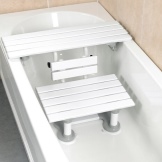
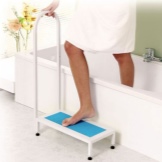
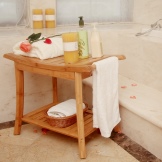
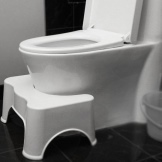
Ladders, tables
Some types of stools are used not only as seating, but also have other purposes. There are ladder stools and table stools. Many stools of sufficient height can be used as coasters or bedside tables, but there are also special models in which the seat-table top has the shape of half an oval, so they can be moved close to the wall or to the side of the sofa, and if you put two such stools next to each other, then you get a table with an oval top.

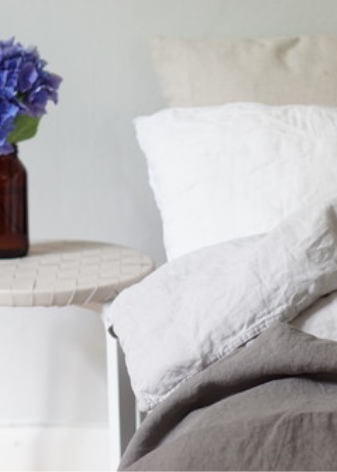
For use as both a stool and a step-ladder, models with an additional step surface have been developed.
They are taller than the standard ones, but they are easy to climb due to the steps located below. Such stairs it is not recommended to paint or varnish, as this will make the surface of the steps too slippery.
This piece of furniture is very useful in many cases: when you need to get something from the top shelf of the closet, hang curtains on the windows, remove dust from tall furniture, etc. If necessary, ladder stools are used as whatnots, for example, you can put flower pots on them.
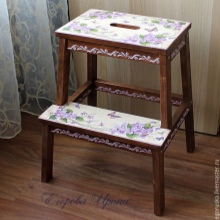


For a bath
It is customary to make stools for a bath from solid wood, linden is often used, since its wood, unlike pine, does not contain resin, which could protrude to the surface under the influence of high temperatures. Linden wood does not darken, retains its natural color for a long time, has no knots, and is pleasant to the touch. Also, furniture in the bathhouse is made of alder or aspen (like linden, these are hardwood trees). Sauna stools are not painted or varnished. Seats, as a rule, are made of slats with gaps so that water does not accumulate on top, and the stool dries out faster.
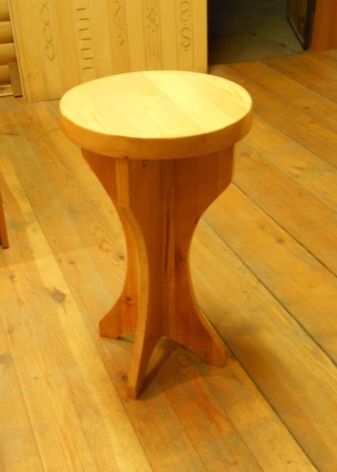
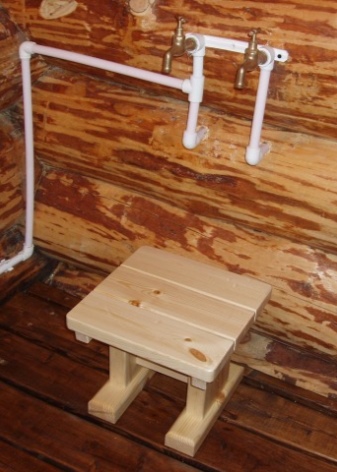
Street
For outdoor recreation or work at a summer cottage, special models of stools have been developed. Usually, They are foldable for easy storage and transport from place to place, and are made of materials that are not subject to rot, corrosion and damage from the sun, or have coatings that give them such properties. Such stools - an irreplaceable thing for giving, which is always useful for gardening work, for example, for weeding, which is much easier to do while sitting.Some foldable models (fabric and metal tubing or all-metal) can easily fit into a bag and take with you on a picnic or fishing trip.


Bar
Bar stools are placed near the bar counter. Of all types, these are the tallest stools they have leg support and reduced seat size. Furniture of this type is often used not only in catering establishments, but also in apartments and private houses, if a bar is equipped in kitchens or living rooms. Such stools, as a rule, are lower than usual bar stools, but have the same design and are called semi-bar stools. Bar stools are made of durable materials, coated to resist wear and tear and frequent cleaning.
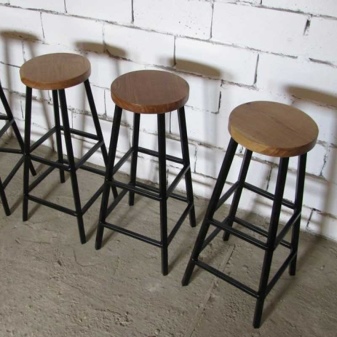
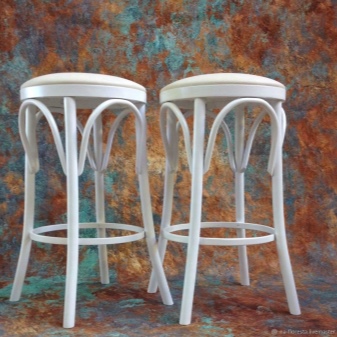
Orthopedic
Orthopedic devices allow the person sitting on them to hold their back so that the spine maintains its natural S-shaped position. There are three types of such orthopedic furniture on sale:
with a movable seat and a fixed base;
with two supporting surfaces (one of them is for the knees), some models are made with a back, they are called "knee chairs";
with a saddle seat, it is called a saddle chair, although it usually lacks a back.
Orthopedic stools allow you to form correct posture, keep your back healthy, and reduce fatigue from working in a sitting position.
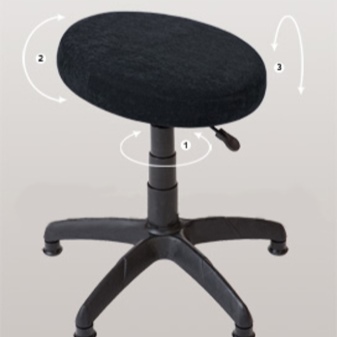
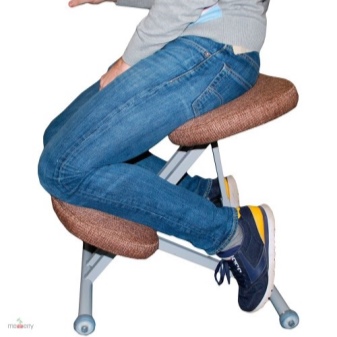
Design and functionality
Stools have a wide variety of designs, all of them are united except by the presence of a seat and supporting elements supporting it. However, in some cases, both can be one detail. The design of stools does not imply a back, a piece of furniture with a back for seating one person is called a chair. All designs can be divided into three types:
collapsible (for example, with unscrewed legs);
non-separable;
folding.
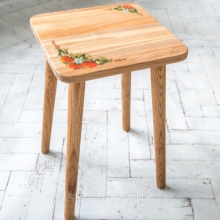
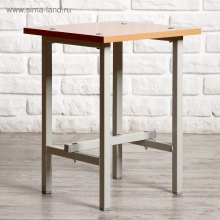
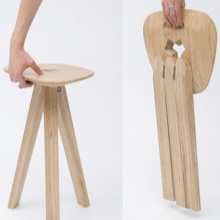
Tourist (hiking) stools are made mainly folding or collapsible. Many types of garden stools have a folding design. By the nature of use, there are options:
intended only for the seat;
having additional functions (for example, a chest stool, a step-ladder, with a box for storing various things under the seat, a table-stool, a pedestal-stool, etc.).
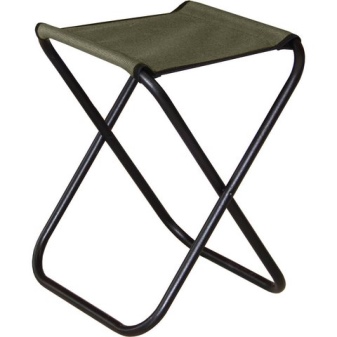

Common types
The most common design is a seat and four legs, fastened underneath by drawers (connecting strips). Sometimes the legs can be additionally connected at the bottom with the help of projectors, as a result of which the structure is reinforced. Some types of four-legged stools are made without drawers.
A single-legged stool is also a fairly common design. The leg can stand on a small round base or have three, four or five supports. The first type of construction is found, for example, among bar stools.
They can be equipped with a gas lift swing mechanism.
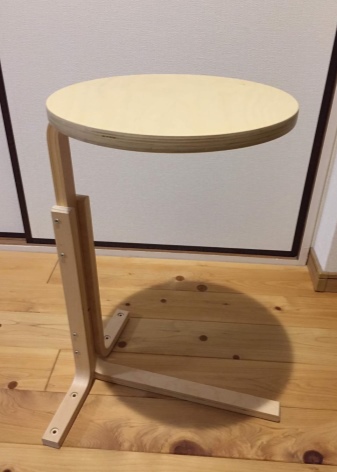
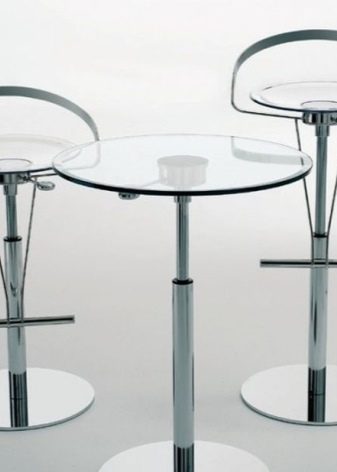
Some types of stools for playing musical instruments have a leg with three or four supports, a leg with five supports is found in orthopedic and professional (for example, for manicurists). Many professional stools (one or four legged) are designed with an adjustable seat height.
Swivel seat can be not only for bar or professional furniture, but also stools that are placed in the bath or shower. The design of a stool on two supports (on two legs), sometimes connected by a projectile, is also often found. Such a piece of furniture is something like a single bench. Some foldable models have two or four legs that intersect crosswise.
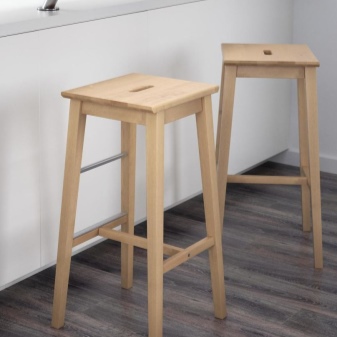
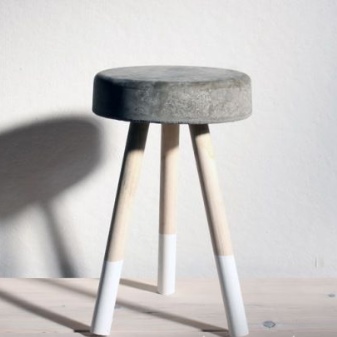
With three legs
There are also three-legged stools. Such a stool is good because, if you put it on an uneven surface, it will touch it with all three legs, while in a four-legged one of the legs will be above this surface, as a result of which, under the weight of the body, he will begin to stagger, one of his three legs will touch the floor, then the other. It is highly discouraged to stand on three-legged stools, as they are very unstable and there is a high risk of falling.
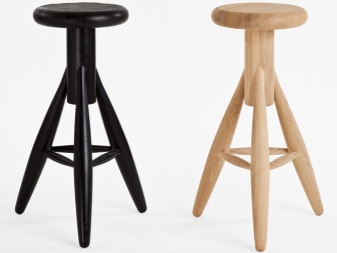
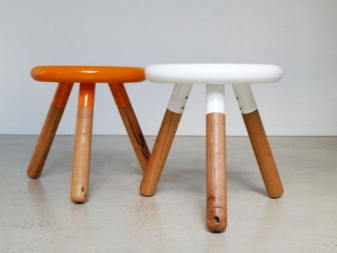
Shifters
Some types of designs suggest that the seat height can be changed without using a special mechanism, but simply by flipping the object 180 degrees. These are the so-called upside-down stools. According to this principle, mini-benches are made for working in the garden. They are foldable, so there shouldn't be any problems with storage space.... A flip-flop can also be a ladder stool, which has steps fixed between the legs. There is also a designer upside-down stool in the shape of an hourglass.
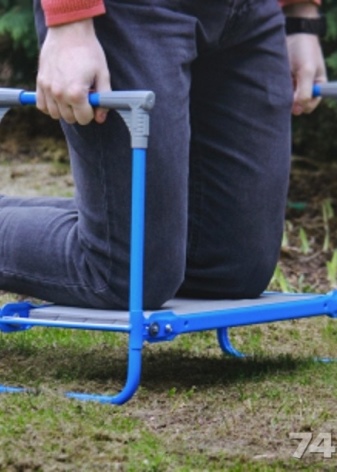
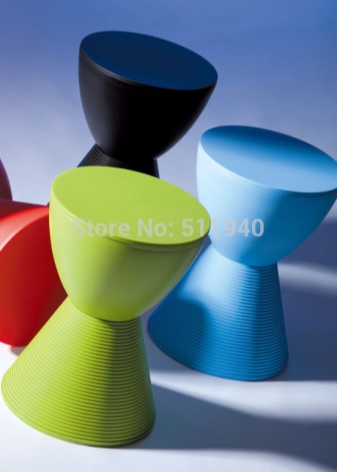
Materials (edit)
Stools are made from different types of materials. The main ones are:
wood;
plastic;
metal;
Chipboard;
MDF.
Their different combinations are also possible, when the frame is made of one material, and the seat and upholstery from others.
Frame
There are several types of stools. These are models in which the frame (legs, supports) and the seat:
from one material;
from different materials;
presented in one piece from one material.
The latter type includes Chinese-style ceramic stools, which are in the shape of a cylinder or barrel. Seating items made from tree stumps can also be included in this category. Among the combined models, products with metal chrome legs and a seat in leatherette upholstery are common. Also, options with iron (metal) legs and seats made of chipboard or MDF are in great demand.

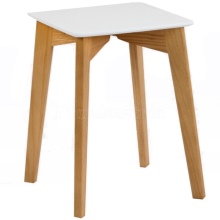
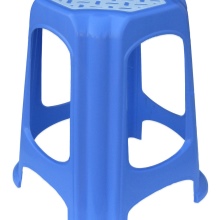
The metal frame can be:
forged;
from the pipe;
from bent sheet metal.
The color of metal parts can be different, manufacturers offer a wide range of options: white, black, gold, bronze, silver, copper, chrome and others. The seat on stools with a forged frame is usually made soft. Wooden stools are presented in a wide variety of models:
with chiseled legs;
with carved legs and seat;
from a bar, in a loft style;
with bent parts;
from parts with natural shapes, etc.
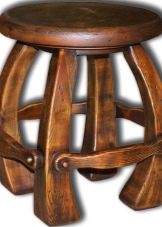
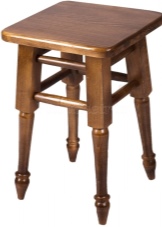

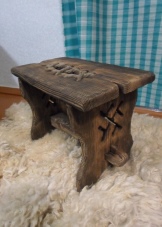
Pine stools are among the most affordable products in this category, oak products are much more expensive, but they are also more durable.... As a budget alternative to oak stools, options are often offered from cheaper materials, for example, from MDF or birch veneered with oak... Often a seat is made in this way, while the frame is made, for example, of metal.
Seat
The most common seat materials are:
Chipboard + upholstery;
Chipboard;
MDF;
wood;
plastic.
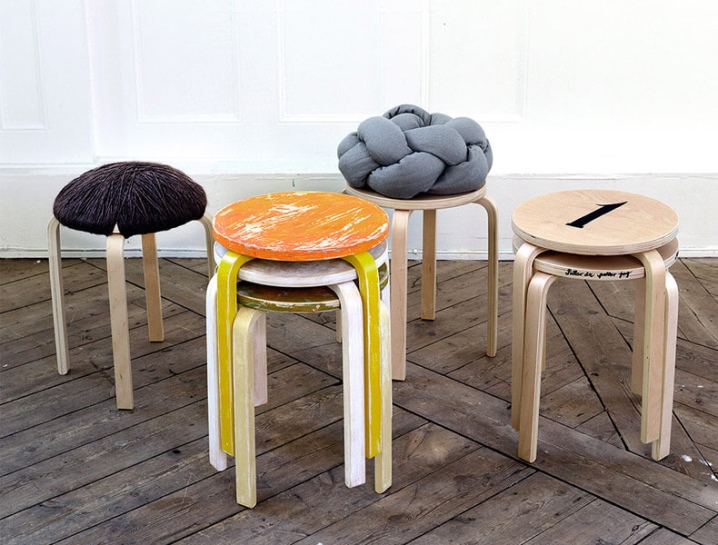
Seats in some designer models are made of wood and tinted or clear epoxy. Resin is poured into small-diameter wood cuts or trimmings of wooden planks, placed in a special shape for the size of the future seat. When the resin hardens, the workpiece is removed from the mold and processed.
The result is a unique piece, each with a distinct arrangement and composition of the wood elements included. In addition, this method of manufacturing the seats makes it possible to recycle the waste that remains from the production of wooden furniture.
Epoxy resin is also poured into the gaps that are in large-diameter sawn cuts. Tinted with blue, blue, green, the hardened resin resembles water.
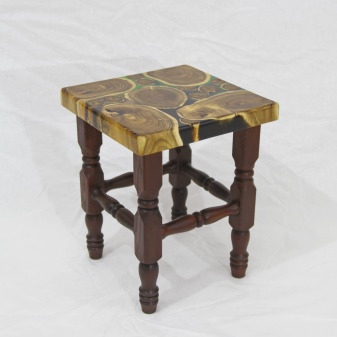
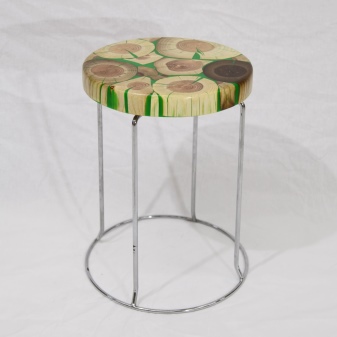
The rattan stools have a rattan bark wicker seat Is a good alternative to soft seats with fabric upholstery. High-end furniture includes stools with leather seat upholstery. The frame of such furniture is usually made of wood. In addition, seat upholstery uses:
jacquard fabric, including chenille;
microfiber;
artificial leather;
matting.
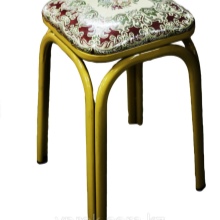
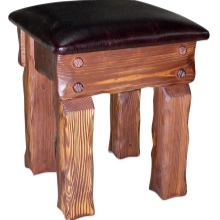
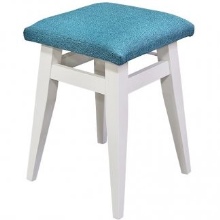
Dimensions (edit)
- Stool standard height - from 42 to 48 cm, the 45 cm option is most often found on sale.
- Standard height of bar stools - 75–85 cm (depending on the height of the bar, which can be from 110 to 130 cm).
- High kitchen stools (semi-bar) - 63–65 cm.
- Low plasticused as a footrest or mini-step accessory can be 13 cm high.
- Height of models that can be used like a stepladder or small bookcase - 50 cm.
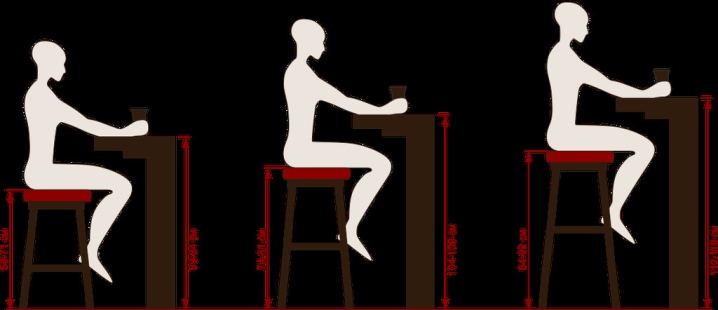
Forms
The shapes of stools are represented by a very wide variety of options. The most common shape of the seat is square or round. Rectangular and triangular are also widespread. Designer stools come in many different shapes:
a truncated pyramid or cone;
keg;
hyperboloid;
resembling the number 7;
Z-shaped,
hourglass, coil or other objects and figures.
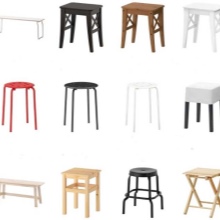
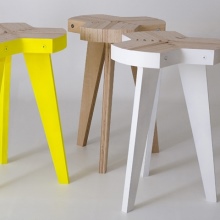
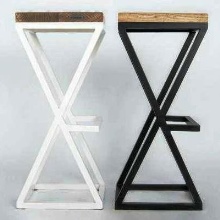
Colors
The colors are determined by the material of manufacture, as well as the furniture style. For wooden furniture, black, brown, white are most often chosen. For products made of chipboard - beige or wenge and bleached oak. Plastic models are usually made in bright colors: red, orange, green.
Pink, blue, yellow, green and different color combinations are in demand for children's stools.
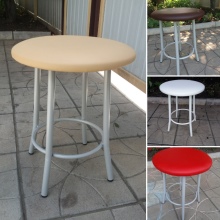
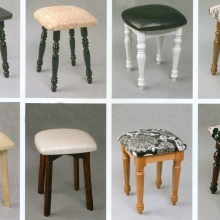
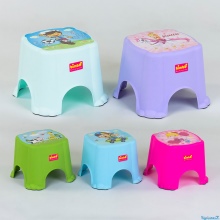
Styles
Stools are made in a wide variety of furniture styles. The Viennese can be considered a classic type. This is an elegant non-separable bent wood stool with a round seat. All of its elements are characterized by smooth lines, even the tsars and projections (in the bar version) have the shape of a semicircle. The following types of stools can be found in modern apartments, which are sold under the name "Classic":
wooden stool on chiseled thin legs, with drawers and a square seat, suitable for interiors in style provence and country;
on a metal frame, with a round or square seat covered with artificial leather, without drawers, with three or four legs;
wood, on four straight legs, with drawers and a soft square seat covered with fabric.
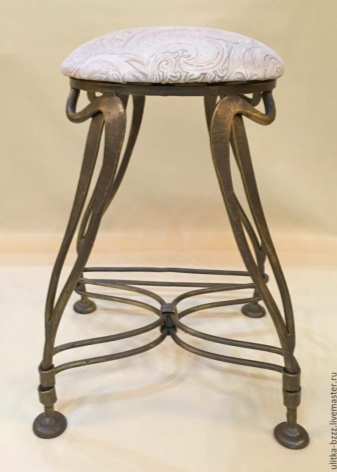
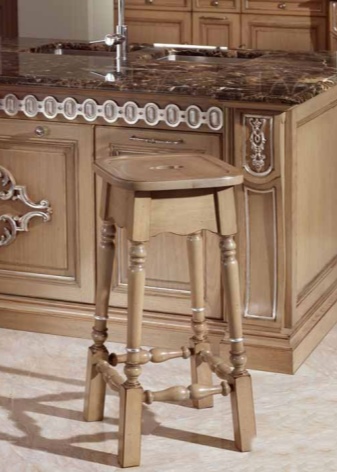
For summer cottages, country houses and bars, antique stools are often chosen. This is massive wooden furniture, artificially aged using brushing and other joinery techniques. Upholstered furniture with a carriage coupler has come into fashion. This technique of decorative upholstery using capitonne buttons dates back to the middle of the 18th century. Today, puffs can be decorated in this way. Taburets with forged legs and frame are made in different styles:
modern;
loft;
baroque;
minimalism, etc.
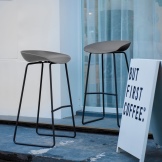

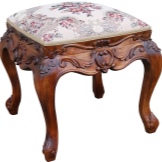
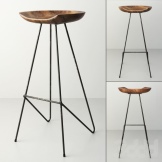
Unusual wooden stools are created by Japanese designers.
For example, designer Sori Yanagi received a gold medal at the Milan Triennial for the creation of a butterfly chair. The Butterfly Chair combines the traditions of Japanese culture and modern design trends.
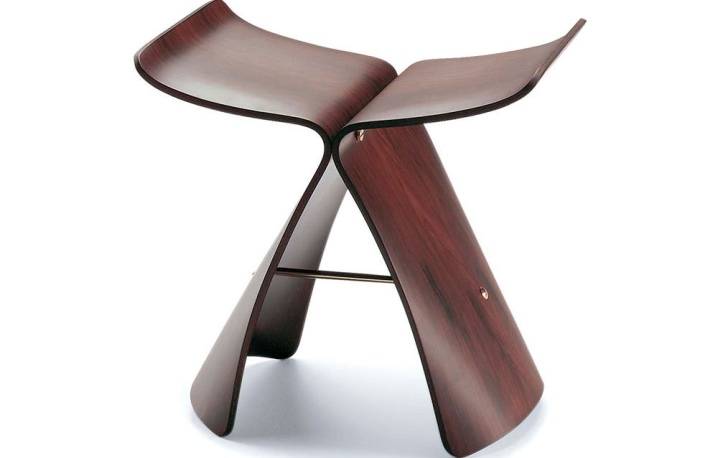
How to choose?
When choosing, you need to consider the following factors:
durability of the material, its safety, quality of processing;
strength and stability of the entire structure (all connections must be strong and reliable);
the weight of the product and its overall ergonomics - convenience, safety of use;
height (it should be comfortable);
the specifics of caring for the thing (for example, models with a hard seat do not require special care);
compliance with the style of the room and other furnishings (for example, can they make a set with a table);
price;
guarantee period.
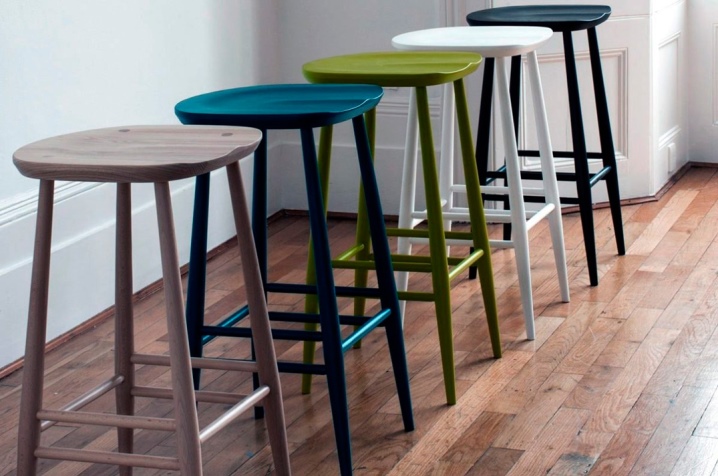
Combination rules in the interior
When choosing stools in a room, it must be borne in mind that they must correspond to the style in which the interior is decorated. Plastic ones are appropriate for pop art style, with a metal frame - for high-tech, loft, modern style, and wooden ones - for country style, Provence, loft, minimalism. Stools should be combined with other furnishings. In a hallway, for example with a coat rack, mirror, shelf or shoe cabinet.
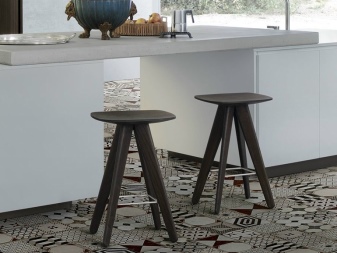

Manufacturers
The number of stool manufacturers is very large.Among the well-known foreign brands in Russia: IKEA, Miniforms, Bonaldo, Tonin Casa. Among the popular Russian ones are Domoteka, Shatura. "Commander" and others. Stools from Chinese manufacturers are also in demand.
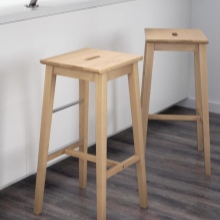
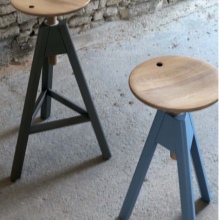
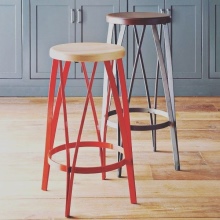
Stylish options
In conclusion, some unusual and beautiful examples of the creations of famous designers.
"Elephant" - modern classic. This is the famous model of Japanese designer Sori Yanagi.
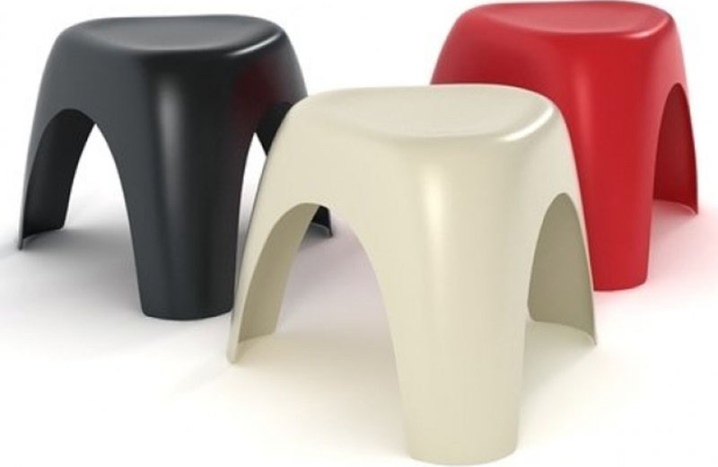
- Creative "Flying" stool (Koncord) from designer Karim Rashid.

- Fun furniture by designer Philippe Grasse.
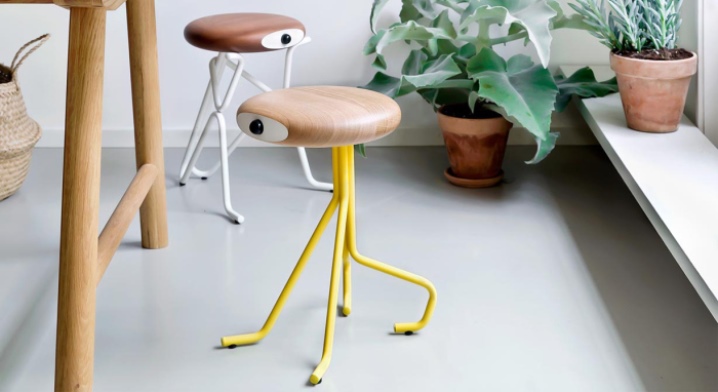
Works by Belgian designer Kaspar Hamaker.
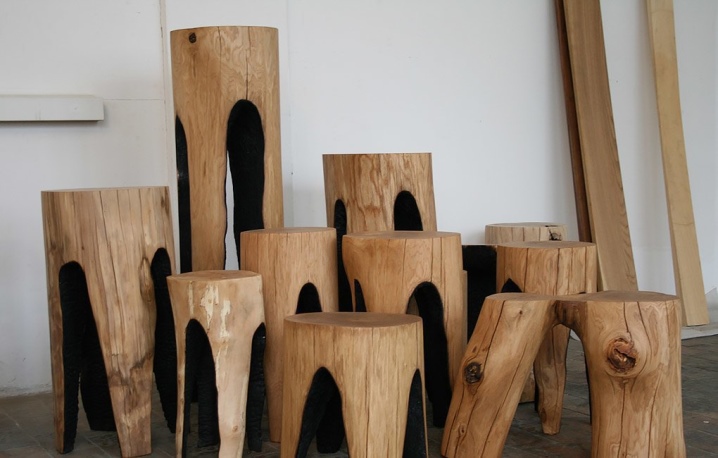
For information on how to make an unusual stool with your own hands, see the video.













The comment was sent successfully.